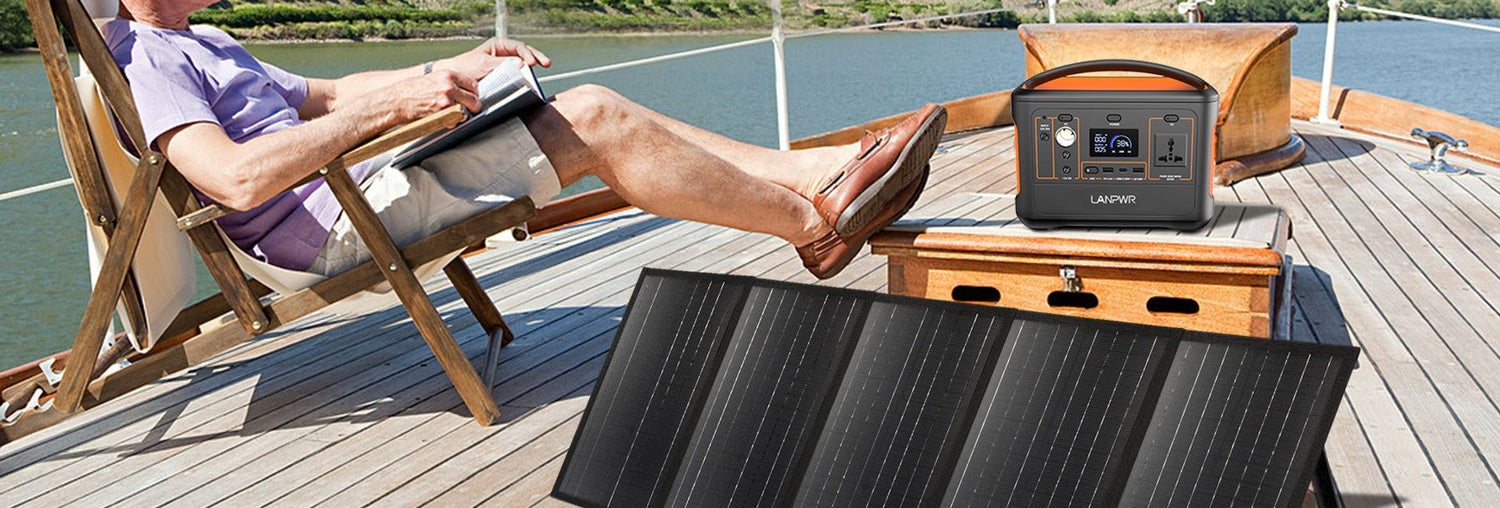Finding a portable power station tailored to your needs requires considering multiple aspects, from power output and battery capacity portability - to production, battery size capacity, and portability. We will outline these key characteristics here so that when purchasing portable power stations, they meet all your criteria.
Power Output
A portable power station's output, measured in watts (W), is one of the critical factors to consider when purchasing one. Wattage determines what devices and appliances the station can support; for smartphones and tablets, charging small batteries requiring 100W-30W output may suffice, whereas larger appliances like laptops, CPAP machines, or mini fridges require higher wattages (505W or above).
Battery Capacity
Watt-hours (Wh) measure the total energy stored and distributed over time by your power station. A higher capacity means more devices can run for an extended period without needing to recharge it as often. A capacity between 200Wh and 500Wh may suffice; for extended use or multiple devices, consider power stations with capacities greater than 1000Wh.
Recharging Options
Diversified charging methods add convenience and efficiency to portable power stations. Most can be recharged via AC outlets, but others support alternative recharge methods like solar panels, car chargers, or USB-C. Solar charging may be particularly advantageous for outdoor enthusiasts without access to traditional power sources; look for models that support multiple recharge methods to be prepared for various scenarios.
Portability
Physical size and weight considerations are pivotal when choosing the ideal power station, mainly if it will be frequently carried around with you. Smaller, lighter units may work for day trips or light travel, while larger but potentially heavier units might be necessary if camping or emergency home backups are part of your plans; check dimensions/weight specifications before purchasing.
Additional Features
Considering all its additional features can significantly increase its utility and value when purchasing a portable power station. Here is an in-depth examination of some critical additional features that could make a noticeable difference to its effectiveness and usability:
Multiple Output Ports.
Power stations with multiple output ports allow multiple devices to be charged simultaneously, satisfying various charging needs. Common types include:
USB Ports: Standard USB-A ports are essential to charging smartphones, tablets, cameras, and other small electronics; newer USB-C ports offer faster charging for smartphones or even powering laptops.
AC Outlets are essential for powering larger devices such as laptops, CPAP machines, portable coolers, and small household appliances. DC Carports are excellent solutions for charging vehicle-bound devices such as GPS units or car fridges.
12V Outlets are ideal for outdoor camping equipment such as air pumps and lighting solutions. At the same time, an LCD Display on a portable power station provides vital information at a glance, increasing user-friendliness and efficiency. A typical LCD would display:
Battery Percentage: Stay informed on your remaining battery life to better manage energy use and expenditure. Input/Output Wattage: Display how much power is being consumed and charged, providing insight into energy management practices.
Error Messages: Notifies of issues like overloads or system faults to help troubleshoot and protect devices.
Safety Features
Electrical devices need to be treated as potentially hazardous, so portable power stations come equipped with numerous safeguards designed for their protection: Error Messages are one such safeguard, alerting users when overloads occur or system faults exist, and should always include features to mitigate that threat: Overload indicators or system fault indicators that help troubleshoot and safeguard devices are among other essential safety features found within them - portable power stations usually feature several safety features:
Overcharge Protection: This protects batteries from charging past their capacity, extending battery lifespan and avoiding accidents.
Overvoltage or Overcurrent Protection: This protects power stations and connected devices from receiving too much current or voltage, respectively.
Temperature Control: To maintain safe conditions in the machine's environment and ensure safe temperatures are reached, fans or heat sinks are often used for heat dissipation.
Certain power stations feature wireless charging pads, which make charging compatible smartphones and other devices without cables easier. This offers greater convenience while decreasing clutter.
Eco-Friendly Mode
Some models feature an eco-friendly mode to conserve energy and extend battery life. This mode turns off when there is minimal or no load for an extended period. This feature can come in particularly handy during camping trips, where conserving power is crucial.
Durability and Design
Rugged Construction: Certain power stations feature rugged construction designed for outdoor use with durable housing that can withstand adverse environments, making them suitable for prolonged outdoor use.
Water Resistance: Certain models offer water resistance features, which are essential in rainy environments or near bodies of water.
Expandability
Some power stations allow users to expand capacity and running time by connecting additional batteries, which can provide increased capacity and extended usage times. This feature may prove particularly valuable when planning off-grid trips or providing emergency backup power needs.
Advanced models often incorporate Bluetooth or Wi-Fi connectivity, enabling you to control and monitor their power station from a smartphone app - including tracking energy usage, remotely adjusting settings, and receiving firmware updates.
Final Word
Finding a suitable portable power station requires considering several vital aspects, including output power output, battery capacity, portability, charging options and features, and your individual power needs and features. Once these have been assessed, you can select an efficient portable solution that meets them both immediately.














Leave a comment
This site is protected by hCaptcha and the hCaptcha Privacy Policy and Terms of Service apply.